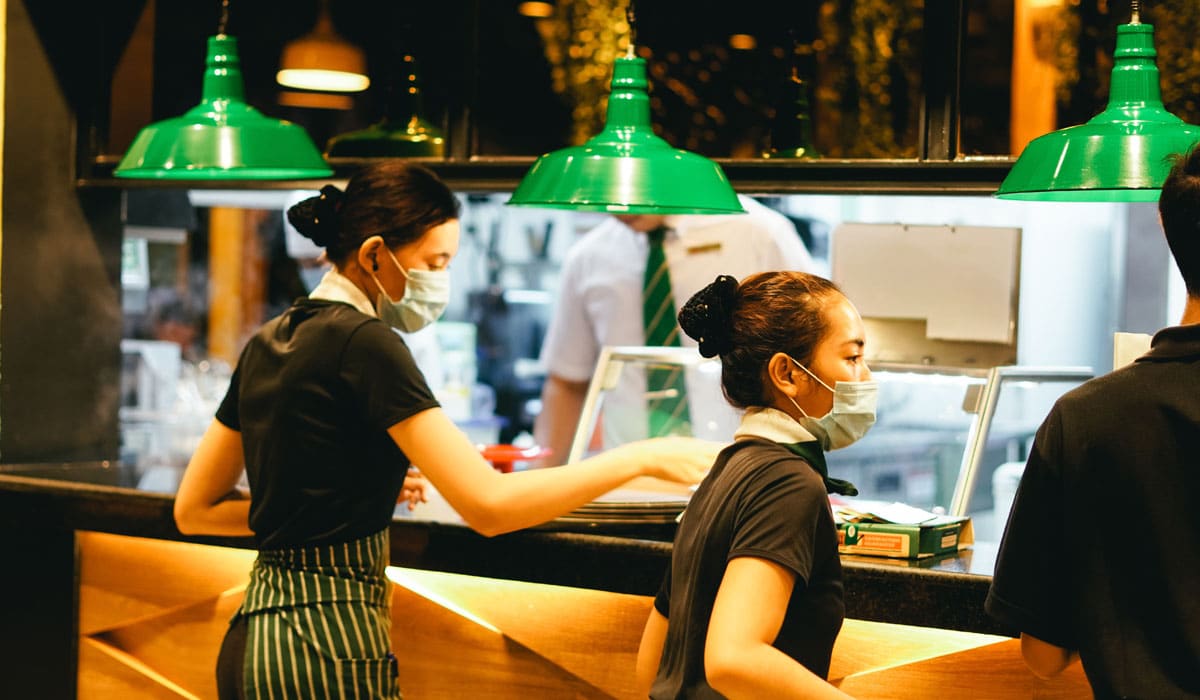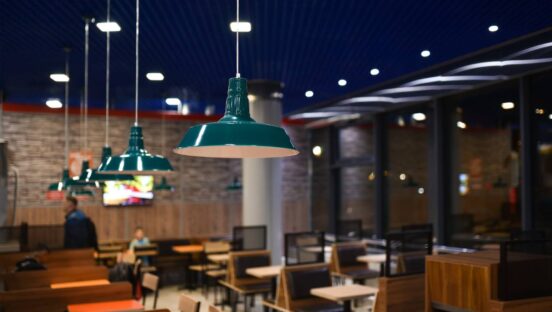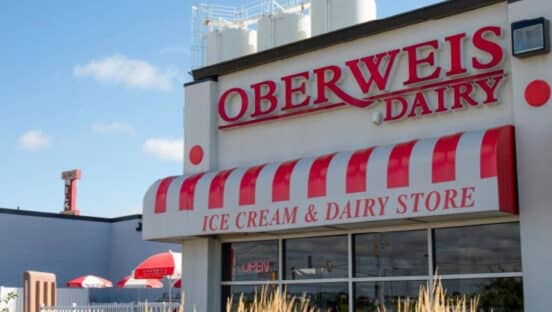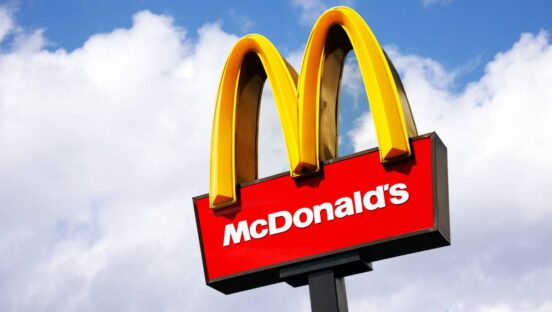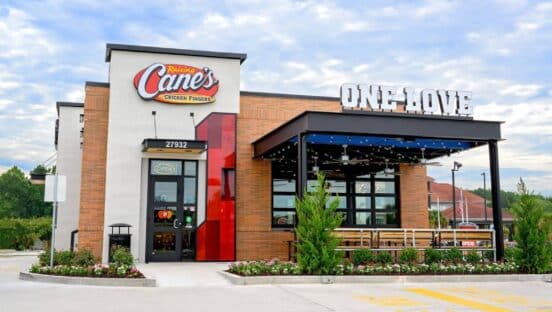From the rise of remote work to wage rates, COVID-19 safety, and the possibility of workers fleeing to other sectors, there are myriad factors driving the industry’s labor shortage. Yet one topic continues to provoke fiery debate over others, dividing camps, and recalibrating long-held beliefs about what it means to work in a restaurant.
Is the labor concern today the government’s doing? In other terms, did officials incentivize people to stay home by extending the $300 weekly unemployment boost through the beginning of September, as outlined in President Joe Biden’s $1.9 trillion American Rescue Plan? That, coupled with stimulus checks, has, according to some, kept employees sidelined.
It’s brought out wild tales from the frontlines, too, like an Illinois McDonald’s giving away iPhones to new recruits.
In a late April State of the Industry webinar, Black Box Intelligence asked 360-plus operators this question. Fifty-seven percent credited “higher pay through unemployment.” Datassential asked the same of consumers in a recent dive. Fifty-two percent blamed, “enhanced unemployment benefits create a disincentive to work,” while 39 percent picked “wages in foodservice are not high enough to attract employees.”
To grasp the scope of the labor situation, there were nearly half a million advertised hospitality and catering vacancies open across the U.S. in a recent data pull from job search engine Adzuna. That’s up 97 percent since January 2021.
Something else to consider—more U.S. workers are quitting their jobs than at any time in at least two decades. In April, the share of U.S. workers quitting was 2.7 percent, per the DOL. Or 1.6 percent above a year earlier, and the highest level since at least 2000.
That point offers further perspective as to why restaurants are racing to raise wages and roll out incentives to compete.
Adzuna said more than 54,400 of the openings promised signing bonuses to new staff. Barbecue brand Mac’s Speed Shop is even offering profit sharing for hourly employees.
A pressing question, however, is whether this is going to last? In some ways, the quitting statistic suggests the bottom rung of the ladder has changed for restaurants, at least to some extent. Employees have appreciated more robust recruiting tactics from restaurants of late—whether that’s better systems and listings from operators, or if it’s higher pay or friendlier work conditions. Some of these COVID changes might not be war-time efforts; they might be table-stakes of a changing labor pool.
That’s something, however, only time will be the judge of. There will always be a demand for entry into the workforce for people—a role restaurants historically fill better than most. Plus, seasonal and part-time work. Restaurants, while always courting retention, of course, also court churn for employees who might be on their way to somewhere else. Think the teenage workforce, older employees, etc. It’s why continued-education programs are such powerful lures for brands like Chipotle and Taco Bell. The idea of somebody getting their start at a restaurant remains a strong lever.
It is, though, cloudier at the starting line today thanks to the gig economy and some the younger generation’s changing paths to revenue. Social media, influencer opportunities, esports, and other tech-enabled possibilities have broadened the notion of first-time work. And then you toss how COVID changed perception into the mix.
Steve Cadigan, a talent consultant who led human resources at LinkedIn during its early years, told the Wall Street Journal, “People are seeing the world differently. It’s going to take time for people to think through, ‘How do I unattach where I’m at and reattach to something new?’ We’re going to see a massive shift in the next few years.”
A March survey of 2,000 workers by Prudential Financial Inc., as cited by the WSJ, showed that one-quarter of respondents plan to soon look for a role with a different employer.
It’s a crowded conversation.
But one obvious thought on restaurants’ minds is whether the end of expanded unemployment will jolt the applicant pool.
Half of the country’s states are set to end the $300 weekly expanded unemployment boost as early as June 12 and as late as July 19—both months ahead of the September 6 expiration date.
QSR caught up with Neema Ardebili, vice president of Global Franchise & Strategic Partnerships at ADP, to discuss the possibility, and what might be next in this red-hot topic.
Now that expanded unemployment benefits are coming to a close, what do you expect to see change in the workforce? Will it happen quickly?
We expect to see an uptick in job applications across the board for every industry, including restaurants – which shouldn’t be a surprise. However, I expect to see less workers returning to restaurants and gravitating towards other jobs, such as virtual ones and those perceived as safer. Open positions may start to be filled as workers who will lose federally boosted benefits will now be motivated to seek work and apply. There will be no exception in the restaurant industry, which comes just in time for consumer demand peaking in the summer, combined with reopenings and mask mandates being lifted, causing occupancy and revenue to rise.
Once you turn off the unemployment benefits, many of these workers who live paycheck to paycheck literally cannot afford to have a gap in income, so they most likely will be looking for work immediately. It wouldn’t be surprising if many are looking now to stay ahead of that hard stop over the next few months.
There are still issues that employers will have to face that are unrelated to unemployment benefits, including a large segment of the workforce being affected due to family needs. Unemployment benefits helped bridge the gap for those who needed income and who could not work due to providing care for children or other family members.
Although we are seeing an increase in restaurant jobs, we are still behind pre-pandemic job rates in the industry (based on the ADP national employment report).
Employers are going to need to evaluate the gap in wages that they can offer as employees will need to now pay for child or elder care. If employers can’t offer an increase in wages, it is likely that there will be a segment of the population who remains unemployed.
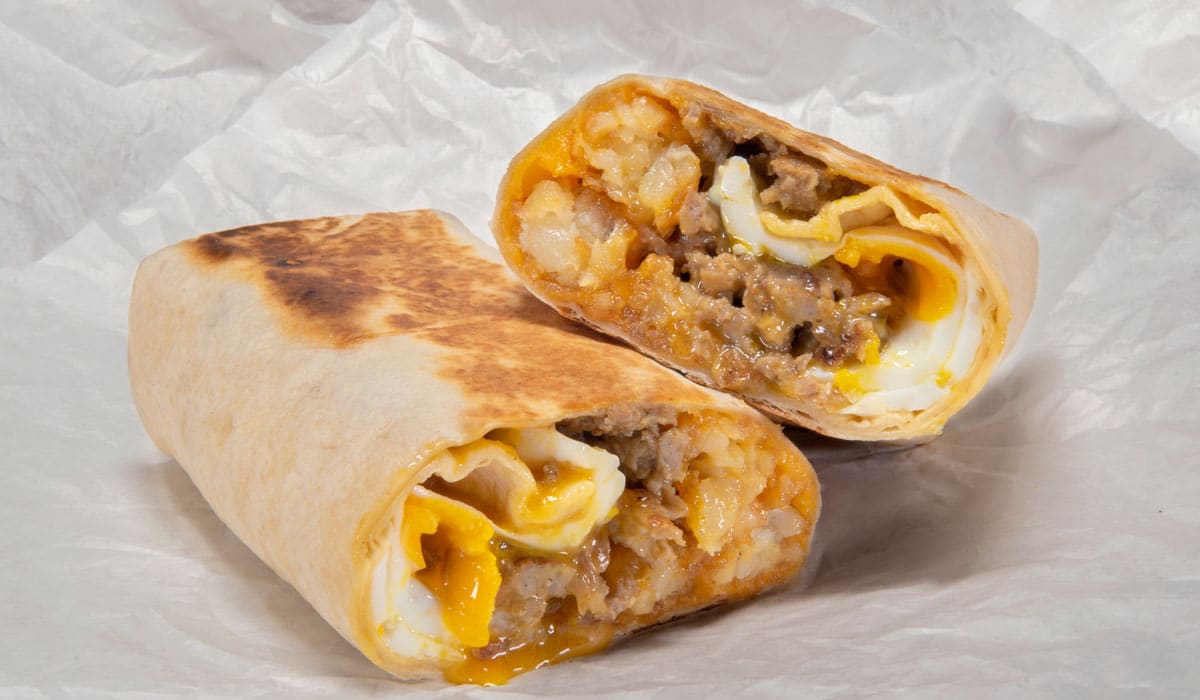
“Our hope is this will be a temporary transitional period that is giving birth to even better business habits and new attention to workers’ needs,” Neema Ardebili says.
How should restaurants brace for this? Is there something they can do to position themselves to win back these workers?
In my opinion it’s less about “bracing” and more of adapting. Owners should not be reactive to supply and demand, but rather be proactive about how they can competitively position their business with wages, flexible time and understanding their workers’ needs. This is obviously easier said than done. We’re seeing many industries raising wages, offering flex time, remote work where possible and trying to be an employer of choice. Workers will be more inclined to choose those jobs with employers who offer competitive wages and a culture that supports employees. We are also seeing businesses offering and advertising signing bonuses, employee referral fees and other incentives to separate themselves from other employers.
Employers also need to be proactive to continue to support growing consumer needs. This means having a more efficient business where they can use technology to provide faster and better service. In addition, restaurants must evaluate how they can be more efficient with using tech to manage operations and staff.
With reduced staff on hand, the existing staff is overworked and customer expectations are not being met, which means the brand suffers. Restaurant owners with understaffed locations need to reduce the burden on their current workforce and that is resulting in some locations reducing operating hours and closing for certain days of the week.
When restaurants need to close and make additional tech investments and increase wages, margins are squeezed. Raising wages is a real thing and is the only way a majority of restaurants feel they can attract talent. However, there’s much more to this. Restaurants need to maintain flexibility with their workforce. Some of the strongest quick-serves we are meeting with are offering corporate discount programs that allow benefits such as discounts on child care, cell phones, etc. These services allow employers to offer valuable savings to employees at no cost to them, which is a great recruiting and retention tool. We also see organizations becoming more attractive to applicants by offering flexible pay options like early access to pay. Employees who can smooth out their cash flow become much more attractive employers to applicants.
When it comes to finding great employees, employers now need to revisit how they find employees by using the media, tools and tech that applicants use. So, this means employers are building out social profiles on social media channels and creating recruiting websites that showcase their culture. They are using tech to text applicants and making it easier for applicants to apply using their mobile devices. The other piece of this, is they need to think about their flexible recruitment methods, including where they are advertising and how they are using current employees to recruit referrals.
What will separate the winning brands from the losing ones? Does it come down to thinking beyond just wages?
Restaurants should get creative and focus on culture and the work experience. In addition to being competitive with compensation, owners should be accommodating with scheduling and worker safety to maximize attracting talent. Owners should stay compliant with PPE, temperature checks, and whatever guidelines are being recommended to ensure worker and customer safety. To help communicate that safety is a priority, employers should clearly describe those proactive measures in job descriptions. Creativity should also roll into business operations as well, such as establishing or expanding delivery and curb-side pickup services, so employees feel more comfortable in these lower-contact areas.
For the first time, employers are also dealing with a multi-generational workforce who each have unique demands in regard to benefits such as early access to wages, flexible pay options, retirement plans, health insurance, pet insurance, recognition opportunities, allowing credit card tips to be paid to them same day, access to financial wellness tools, etc. Learning and development opportunities and career pathing are also incredibly important to workers who are just entering the workforce, while longer term financial security and health insurance is more important to older workers.
Elaborating on that topic, while workers may return initially just to earn money again, how critical is it to think long-term? Not just to recruit employees, but to actually retain them?
Although attracting top talent is a priority, retaining talent is equally if not more vital for a business owner because the cost of recruiting and retraining new hires can be both time consuming and expensive. Higher wages in the short term may be enough to get applicants hired, but if the employer does not offer all of the benefits that the employees want and need, they will resign and go to another employer, possibly a competitor. It’s critical that restaurateurs offer compensation they are confident they can maintain as well as have a plan for retention that goes beyond salary.
Retention is incredibly impactful to a businesses’ bottom line. The longer the employee stays, the more productive they are and they can help train and onboard new hires. They may also have some regular clients who frequent the establishment to see their favorite employees.
By communicating career paths and leadership opportunities for existing employees, restaurants can have continuity in service and their brand will be protected and preserved. Learning opportunities can range from on the job training to more formal plans that involve tuition and tuition reimbursement benefits. The most thoughtful owners and managers evaluate how to give all levels of the workforce performance measurements and incentives as these employees perform.
Organizations should also have a birds eye view of what their workforce looks like, where the gaps are and how they are implementing programs that address diversity, equity and inclusion to adjust with the modern workforce expectations.
Are there other factors restaurants are competing against? Perhaps other industries? Remote work? How has COVID changed the hiring field?
Yes, with new job options available now, workers can be more selective since have a much larger variety of attractive jobs where they can apply. The pandemic is causing a rise in virtual jobs, and workers have more alternative and competitive options than just traditional in-person jobs, like restaurants. As mentioned, restaurant workers are migrating towards other industries and businesses because of attractive wage hikes, working conditions, career paths and financial incentives.
Although COVID has changed the hiring field with these alternative work arrangements, virtual jobs will not take over completely, simply due to the nature of the work that needs to be done and the fact that humans are social and enjoy the camaraderie of working with colleagues.
Many businesses are well under way with return to work plans that include a new dynamic that is flexible and accommodates the needs of the business as well as the needs of the employees. The data we’re seeing is that pent-up demand for restaurants is very high and workers will return as owners revamp their operations properly.
Because of personal needs like childcare or elder care, employees may need a more flexible schedule if they choose to keep children at home or, have a lack of care for family members. This is making those type of workers look toward remote work in other industries.
This is a time of evolution and there will be a shift in how work gets done. Businesses who can adapt to a broader target applicant pool with new requirements and expectations will see more success in being able to hire, retain and grow a stronger business.
Has what employees want from restaurants changed?
Workers are now more empowered to collectively express what they have wanted for a long time from employers. Workers have always wanted better pay, earlier access to wages, additional benefits and career opportunities. The pandemic shined a light on this. Now, to meet this increased selectiveness, owners should consider being more flexible to meet those needs as understaffing is putting pressure on management and the overworked restaurant employees.
It is clear that employees are expressing what they want based on taking positions at competitors who are offering. For example, when an employee can have shift flexibility, same day credit card tip pay out, flexible pay options, mobile access, early access to earned wages, increased training and development opportunities, technologically advanced, and a stronger culture, they will leave and not expect any increase in pay.
Speak to some specifics, like childcare services, flexible work schedules, bonuses. Are these becoming table-stakes?
Alternative benefits are a large part of the deciding factors for many workers – and we see that workers are significantly applying to establishments that offer these benefits. Having childcare services is a big concern, especially for women, which goes hand-in-hand with flexible work schedules. Let’s not discount that many of these workers have to take on multiple jobs, and balancing shifts and personal matters is not to be understated.
Restaurants are increasingly advertising on social media and on premises that they are offering instant cash to come in for an interview. As attractive as that many be for a minimum wage worker, owners still need to be mindful that not just attracting talent, but retaining talent is vital. Owners need to be sure they can remain consistent with competitive pay and benefits plan that they can sustain for the long term or else they will see workers take the bonus and run.
Early access to wages, discount programs, financial wellness tools, mobile access to information were at once innovative and unique differentiators for employers to offer; however, as more and more employers are realizing the importance of them for retention, they are becoming table-stake items. So, employers must constantly be in tune with their workers’ evolving needs. By conducting employee engagement surveys or asking employees specifically what they want that they are not getting is another, newer approach in the restaurant industry.
If you had to look into the future, what do you think the labor dynamic looks like a year from now? How can restaurants stay ahead?
Through feedback from our Franchise Advisory Board, one-on-one client discussions and personal experience I’m seeing, the phrase “necessity is the mother of invention” is coming to fruition within the restaurant industry. Many owners will tell you they need to change things, and I feel the seeds that are being planted now will cultivate as early as next year. Our ADP Research Institute also feels the economy is likely to grow modestly after 2021. According to the Congressional Budget Office, St. Louis Federal Reserve, GDP is expected to rise 2.4 percent in 2022 and stabilize for two-to-three years out. Restaurants are a big part of the economy and if restaurateurs are to ride the wave of this expected growth, they certainly need to plant the seeds of successful adaption today.
More specifically, restaurants can stay ahead by adopting technology to become more efficient, remaining empathetic to the needs of workers and simultaneously improving their business culture. We are seeing so many of our clients focusing on reevaluating their own culture by ways of asking us for answers to HR and compliance questions that deeply effect staffing and turnover, such as owners asking us for the latest local resources and legislation available for insight on how to compliantly create more flexibility on hours within their state and/or municipality. Our hope is this will be a temporary transitional period that is giving birth to even better business habits and new attention to workers’ needs. Seeing such a positive development emerge from one of the most difficult years for the hospitality industry is possible when operators have the right technology, insights and strategy in place.

